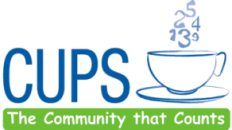NEWS AND INFORMATION
CUPS - THE COMMUNITY THAT COUNTS

Australia's National Statistical Service (NSS) represents the range of statistical services that are collectively provided for Australia. The primary aim of the NSS is to provide an accurate, up-to-date, comprehensive and meaningful picture of the economy, society and the environment to support the formulation and monitoring of policies and to inform Australian society.
A key strategy of the NSS is to develop a strong community of people interested in statistics. A "Community of Users and Producers of Statistics" (CUPS) has been formed to provide a forum for sharing information and for organising community networking and activities. CUPS is open to anyone with a statistical or a statistically-related role in Australian, State and local governments and the academic and business sectors.
The CUPS website contains information on: training, recruitment and career development; statistical references; and links to conferences, seminars and workshops of interest to the Community. The CUPS website also links to relevant professional associations and information networks. As the community develops, interactive networking facilities may be added.
If you would like to hear more about CUPS or if you have an event that you would like to share with the Community please email inquiries@nss.gov.au.
AUSTRALIAN SOCIAL TRENDS, 2007
Released on 7 August 2007, Australian Social Trends, 2007 (cat. no. 4102.0) is the 14th edition of an annual series that presents information on contemporary social issues and areas of public policy concern.
By drawing primarily on a wide range of ABS statistics and statistics from other official sources, Australian Social Trends describes aspects of Australian society and how these are changing over time.
Articles are organised into eight chapters representing the following broad areas of interest: population; family and community; health; education and training; work; economic resources; and housing. A ninth chapter presents articles covering other areas of social concern.
Each chapter is supported by a set of summary tables including key social indicators which provide an overview of social change over the past decade, as well as how social conditions differ across Australian states and territories. A set of international tables also compares Australia with 17 other nations.
The style of the report is clear, focused and easy to read. Effective use is made of summary tables and graphics to highlight key information. The annual series, as it builds up over time, will provide an invaluable historical perspective of social change in Australia.
Australian Social Trends is designed to assist and encourage informed decision-making, and to be of value to a wide audience including those engaged in research, journalism, marketing, teaching and social policy, as well as anyone interested in how we live today and how we've changed over recent decades.
Australian Social Trends can be accessed from the link above or from the ABS Web site Home Page.
INDUSTRY CLASSIFICATION ENTERS 21ST CENTURY
The 2006 Australian and New Zealand Standard Industrial Classification (ANZSIC) was released by the Australian Bureau of Statistics (ABS) early last year. The classification provides a framework for organising data about businesses - by enabling grouping of business units carrying out similar productive activities. It has undergone many changes since first released in 1993 and was redeveloped by the ABS in collaboration with Statistics New Zealand.
The ABS uses ANZSIC in most of its economic collections and for compilation of the national accounts. A wide range of other users from government, academia and the private sector use the ANZSIC for financial, administrative and statistical purposes.
ANZSIC 2006 involved a substantial review of the classification, including extensive consultation with internal and external users and alignment with the upcoming revision of the International Standard Industrial Classification of All Economic Activities (ISIC, Revision 4). It consequently provides a more contemporary and internationally comparable industrial classification system. For example, a whole range of 'new economy' activities have been recognised, including: Internet publishing and broadcasting, provision of Internet access services, computer retailing and communication equipment manufacturing.
ANZSIC 2006 will be implemented by the ABS over the next four years. Data series based on the new classification will be adjusted to ensure comparability with past statistics.
More information is available in the publication Australian and New Zealand Standard Industrial Classification 2006 (cat. no. 1292.0). A number of information papers and concordance files can be located within the Related Information tab of this product. The Information Paper: ANZSIC 2006 Implementation, 2006 (cat. no. 1295.0) details expected release dates of ABS publications using this new classification.
ABS RELEASE INFORMATION
Information on all ABS future product releases can be accessed from ABS Release Advice. This web page also provides links to Previous Releases and Main Economic Indicator Releases.
QUEENSLAND THEME PAGE
This page provides access to Queensland statistical information including statistical releases and links to non-ABS sources. A wide range of economic and social statistics is covered.
 Print Page
Print Page
 Print All
Print All